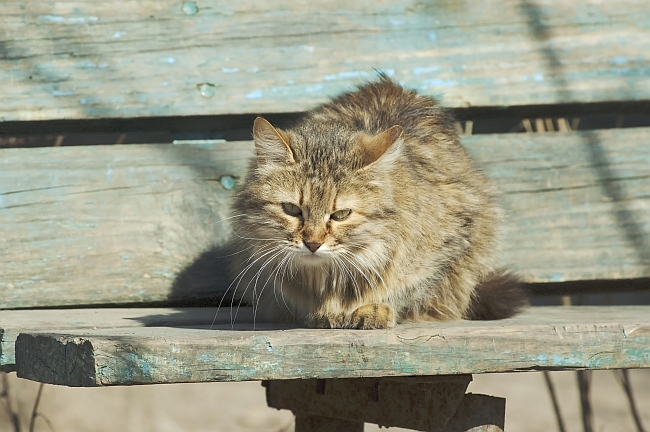
Not many people are familiar with the difference between a stray cat and a feral cat. Strays are felines that were once owned, but have been abandoned, lost, or have escaped from their homes. Feral cats on the other hand, are erstwhile domesticated cats that have fully acclimated to surviving on their own, and have been born in the wild.
Tips about Feral Cats
- They are not socialized to humans (so don’t try to touch them unless you want to risk being scratched!)
- They often carry diseases (like FIV, feline immunodeficiency virus) that might be fatal to your domestic kitty- so don’t try to bring a feral cat home to play with your Persian.
- Feral cats usually congregate in colonies, which can breed further diseases, flea infestations, and an increase in wild feline population. (Many animal protection groups try the “trap-neuter-return” policy as a means of keeping down numbers of feral cats. This method has been known to work in population control.)
- Feral cat communities can exist in cities, rural areas, farmlands, etc. There are notably sizable populations of feral cats at the Colosseum in Rome, at the Ontario colony of the Canadian Parliamentary Cats, and in the city of Jerusalem.
- Feral cats have existed for thousands of years. Once a domestic breed, they have learned to thrive fully in the wild, relying on nature and their own hunting instincts to survive on rodents, insects, lizards, birds, and other small animals.
Dangers of Feral Cats
Even with the noble endeavors or trying to neuter/spay feral cats, the numbers are ever increasing. Accordingly to the Humane Society, only 2% of the 30-40 million feral cats have been spayed or neutered. The means that millions of feral kitties are being born every year, often resulting in a rise in feline euthanasia, and overcrowding in rescue homes. In addition to this, because of their wild nature, feral cats can become defensive and aggressive, biting or scratching people and animals that make them feel threatened or try to catch them.
Benefits of Feral Cats
These untamed creatures might appear mangy or scraggly, but can be a major benefit to society. Across the world, feral cats have been strategically used to decrease rodent populations in Asia, North America, and Europe. For example, in 2002, feral cats were brought to the flower markets in Los Angeles, California and successfully decreased the number of rodents in the area. Conversely, in the same year, existing feral cats were removed from Ventura, California resulting in a greater population of rats in the region. So next time you see an unkempt feral cat, remember that he might be making your neighborhood a better place!

